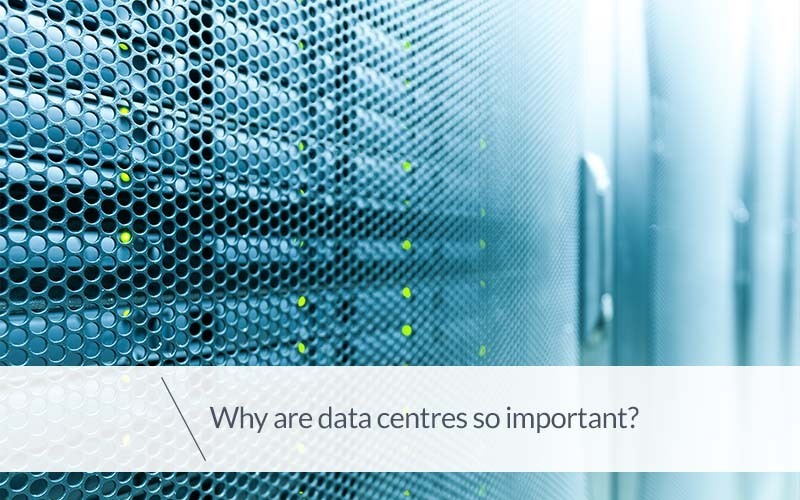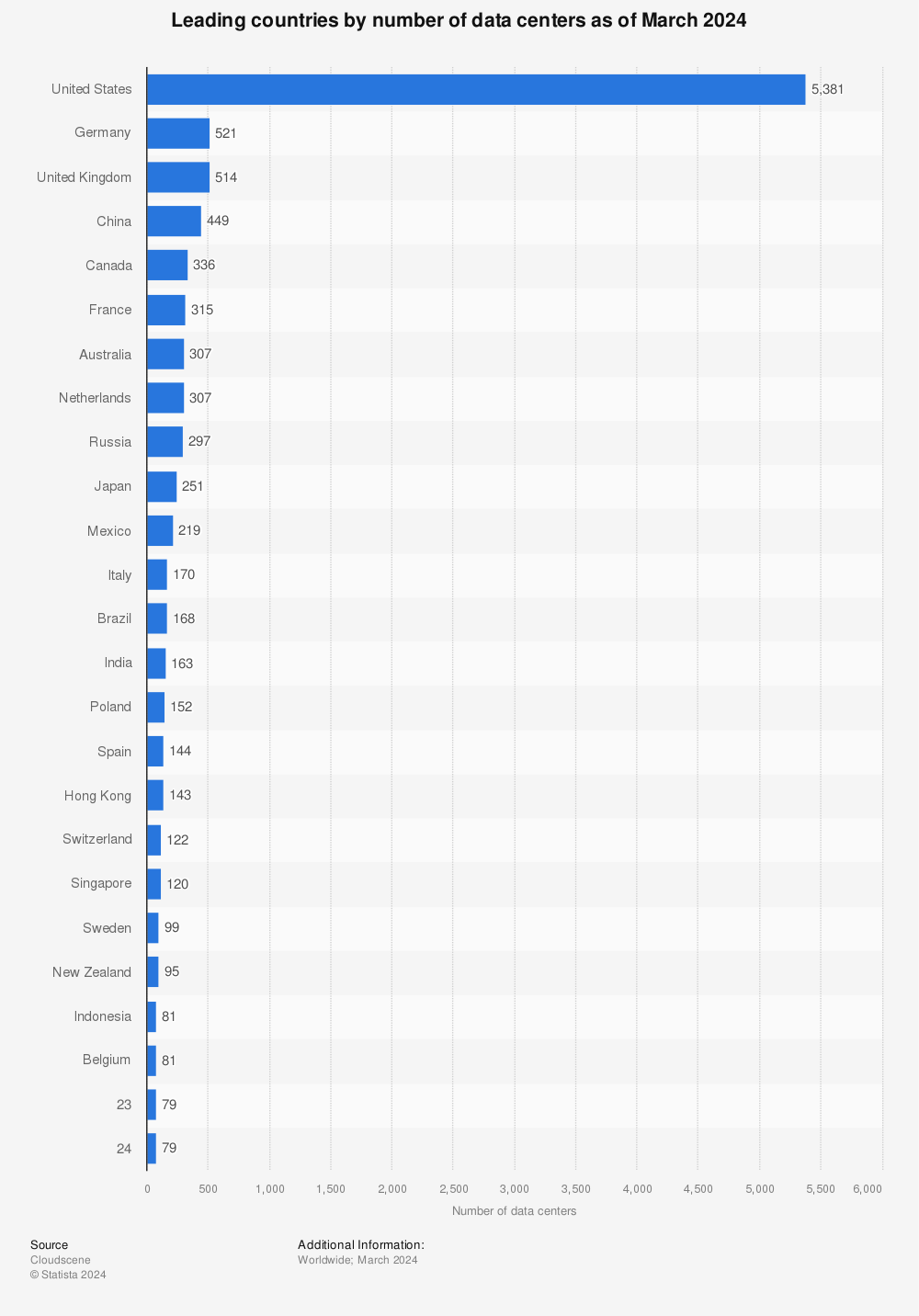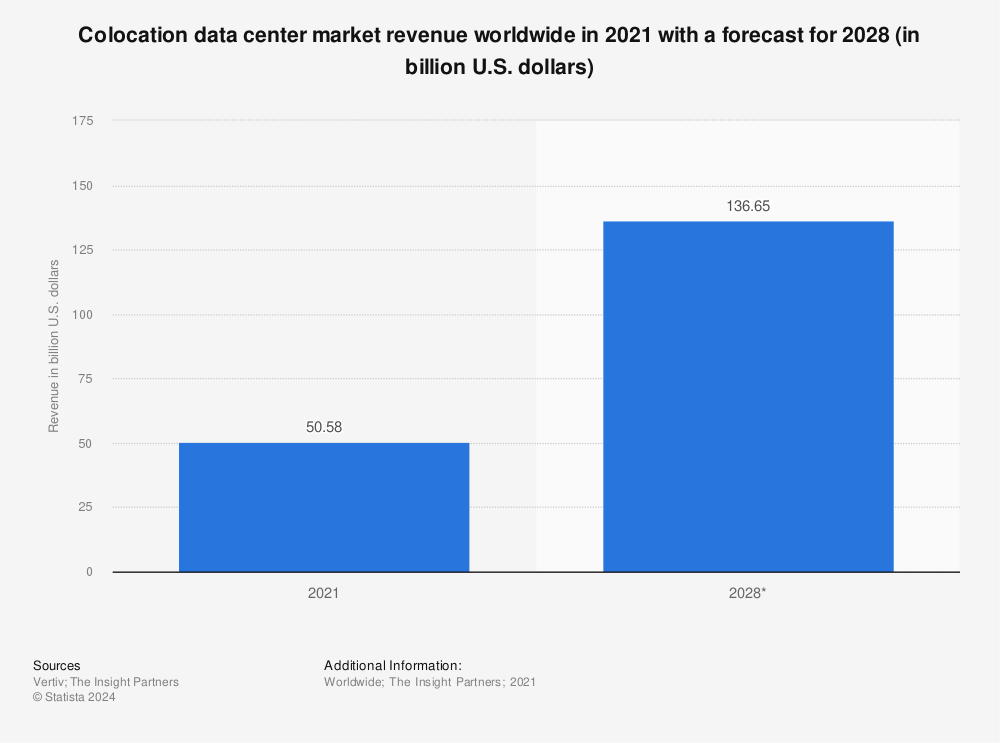
In the digital era, in our daily reality, Data Centres represent the very essence of our global connectivity.
Indeed, according to data developed by Cloudscene, updated in September 2023, there are thousands of data centres active in the world, of which 5,375 are in the USA; more than the sum of those in all other countries. In second place is Germany with 522, followed by the UK with 517 and China with 448. Following, in the top ten, we find Canada, France, Australia, the Netherlands, Russia and Japan.
These formidable technological structures are the digital archives, processing centres and the cornerstones of the technological revolution.
In 2021, global revenue from the data centre colocation market amounted to roughly 50.58 billion US dollars, and an increase is forecast which will bring the total to exceed 136 billion dollars by 2028.
But what are data centres, what is their purpose and how do they work? Let’s take a deep dive together.
What is a data centre?
A data centre is either a physical structure, or a virtual environment, where an organisation or a business store, manage and process vast quantities of data and information.
The data types may include business files, databases, applications and other types of digital information, vital for the correct functioning of the organisation.
Data centres are designed to ensure a secure, dependable and efficient environment for data processing and storage. Generally, these structures house servers, storage devices and network routers, with other IT infrastructure components. They may vary both in size and complexity from small local data centres to vast structures that are globally distributed across several sites.
Data centres are essential for many businesses, in particular for those which heavily depend on digital data. They supply a vast range of services, including website hosting, business data storage, financial transaction processing and much more. The main goal is to assure continual and safe access to data and applications, thus reducing as far as possible risks of data loss, interruptions to service and other problems associated with IT infrastructures.
Types of data centres
There are various types of data centres, each designed to satisfy specific data storage, processing and distribution needs.
Here is an overview:
- Enterprise Data Centres: used by business organisations for their internal IT needs. These datacentres are managed and owned by the business, and are used for storing company data, application and other IT resources.
- Web Hosting Data Centres: supply all hosting services for website hosting and online apps. These datacentres are designed to ensure high speed connections and a high degree of reliability for hosted websites.
- Cloud Data Centres: provide cloud computing services, including storage, processing and cloud application software. Being both highly virtualized and scalable, they permit IT resources to be allocated according to demand, based on user requirements.
- Colocation Data Centres: supply rack space and infrastructure to businesses who wish to use them to install their own servers and network devices. The infrastructure (space, power source, cooling and connectivity) is supplied by the colocation provider, whilst the user manages its own servers.
- Edge Computing Data Centres: bring computing resources closer to the end users or to IoT devices, thus reducing latency. Located close to high population density areas or distribution networks, they improve application performance in real time.
- Disaster Recovery Data Centres: are designed to quickly restore the IT status in case of breakdown or disasters. They contain copies of backup data, often located in diverse geographic locations to ensure redundancy, with abundant back up possibilities and the chance to guarantee operational continuity.
- Mobile Data Centres: these are data centres located on vehicles for emergency or temporary situations which require additional IT capacity. They can be rapidly deployed to specific locations and can supply temporary connectivity and IT services.
- HPC (High- Performance Computing) Data Centres: designed to carry out complex computing applications, such as scientific simulations or modelling. They included high-performance cluster servers, high-functioning GPUs and high-speed interconnections to manage huge workloads.
- Green Data Centres: designed to reduce environmental impact and improve energy efficiency. They adopt sustainable technologies and practices to reduce energy consumption and minimise waste.
Each type of data centre is designed to meet certain requirements or needs of organisations, offering a vast array of services to support modern IT operations.
How does a data centre operate?
A data centre acts as a central hub for data and application storage, management, processing and distribution.
Let’s take a more detailed look at how a data centre is made up and how it works:
- Servers and hardware:
- servers: data centres contain multiple servers which store data and applications. These servers may vary on the basis of business requirements, from virtualisation (using virtual servers on physical hardware) to dedicated hardware for specific applications;
- storage devices: devices such as hard or array disks may be used to store data in a reliable way;
- network devices: routers, switches and other network devices permit connection between the data centre servers and the external world, allowing communication and access to data.
- Cooling and ventilation: servers generate a huge amount of heat when operational. For this reason, they are supplied with advanced cooling systems, such as industrial air-conditioning and ventilation systems, or liquid cooling, to maintain a constant temperature and avoid device overheating.
- Physical and accessibility safety:
- controlled access: physical access to data centres is highly controlled and limited only to authorised personnel;
- physical safety: data centres are often designed with advanced safety features, including closed-circuit TVs, alarms, fire and flood protection systems.
- Backup power: data centres depend on a constant power source. They are often equipped with uninterruptible power sources (UPS) to ensure that they are never without an energy supply even during blackouts.
- Software virtualization and management:
- virtualization: many businesses use virtualisation to optimise resource usage. This means that a single physical server may host multiple virtual servers, each of which can carry out multiple applications;
- software management: project management software is adopted to monitor server performance, ensure data reliability and safety, and automate daily operations.
- Network connection: data centres are connected to high-speed networks to ensure that data can be transferred rapidly with no interruptions.
- Monitoring and maintenance: data centres are continually monitored to identify possible issues, thus ensuring the availability of their service. Technical staff carry out regular precautionary maintenance to avoid breakdowns and extend hardware lifetimes.
In brief, a data centre is a highly specialised environment which provides a safe and reliable infrastructure for the storage and processing company data and applications, conducting a vital role in supporting digital operations for modern organisations.
Why do data centres exist?
Data centres fulfil a fundamental role in supporting many daily digital activities, providing a range of essential services to organisations of varying sizes and from differing sectors.
Here are just some of the main functions of data centres:
- Data storage: they provide safe and reliable storage space for critical business data, compressed files, documents, databases and sensitive information.
- Processing and calculations: servers can conduct highly complex calculations and processing functions for business applications, data analyses, scientific calculations and more much besides.
- Website and application hosting: they host websites, blogs, e-commerce platforms and other online applications, permitting them to be accessible via the internet.
- Cloud services: many businesses offer cloud services, including storage, processing and development platforms hosted on their data centres. These services permit businesses and individuals to store data and use applications without having to manage physical infrastructure.
- Backup and data recovery: they provide data backup services, permitting organisations to create safety copies of important data, and to reinstate the data in the instance of loss or damage.
- Transaction processing: they can process financial transactions, such as payment by credit card and online banking transaction, ensuring security and reliability during the transaction processing phase.
- Supply multimedia content: they support the distribution of multimedia content, such as video streaming and online music services, ensuring a fluid and uninterrupted user experience.
- Machine learning and data analysis: they feed artificial intelligence applications and machine learning functions, processing large sets of data for predictive analysis, and ensuring the optimisation and automation of complex processes.
- Humans resource and organisational management: they are also used for human resource management, accounting, sales management and other critical business applications.
- Security and controlled access: they supply highly advanced IT security services, including firewalls, intruder detection systems and controlled access, to protect data from internal and external threats.
In brief, data centres are the beating heart of digital activities, permitting organisations to store, process and distribute data in a safe and efficient manner, carrying out a key role in supporting technological innovation and business evolution.





